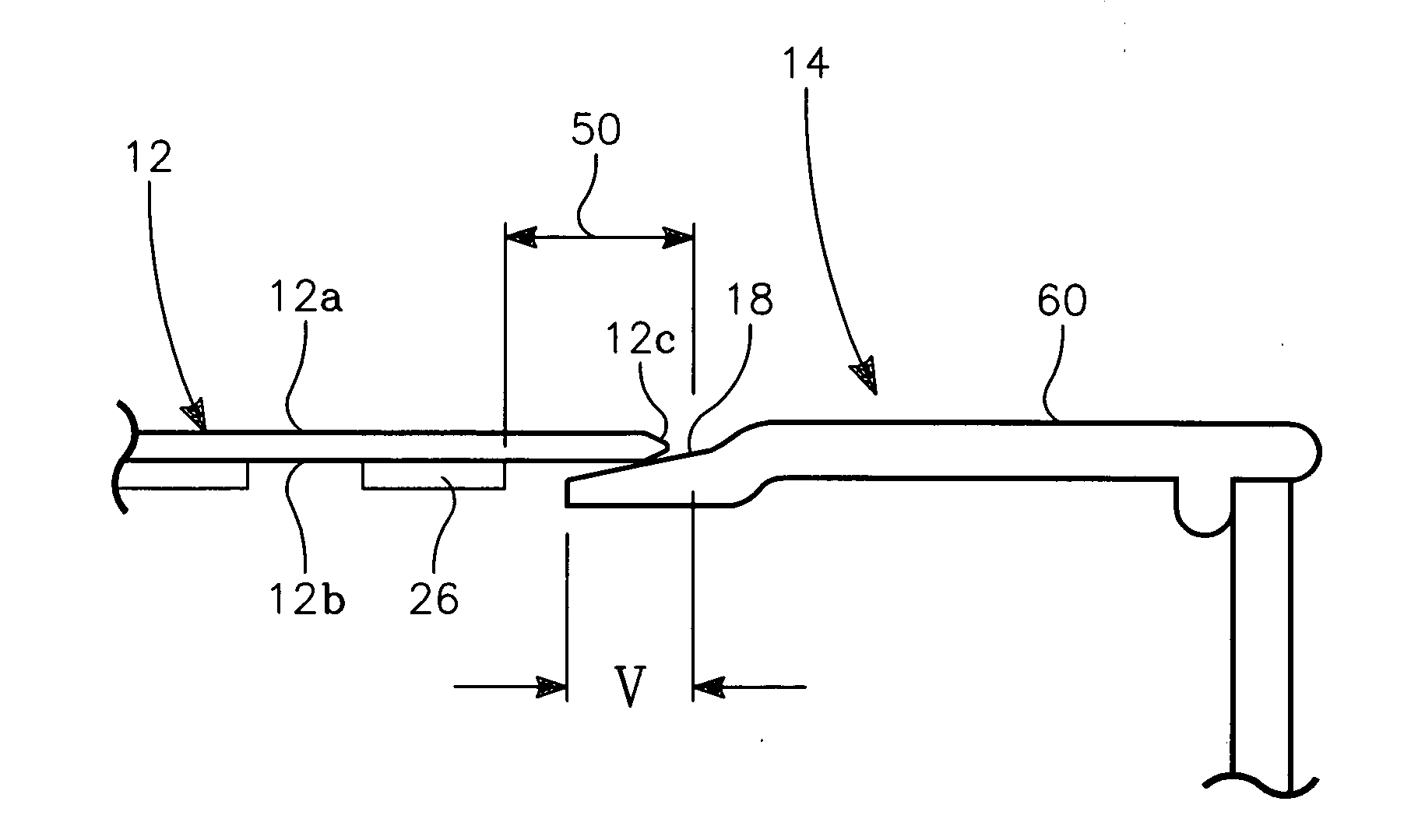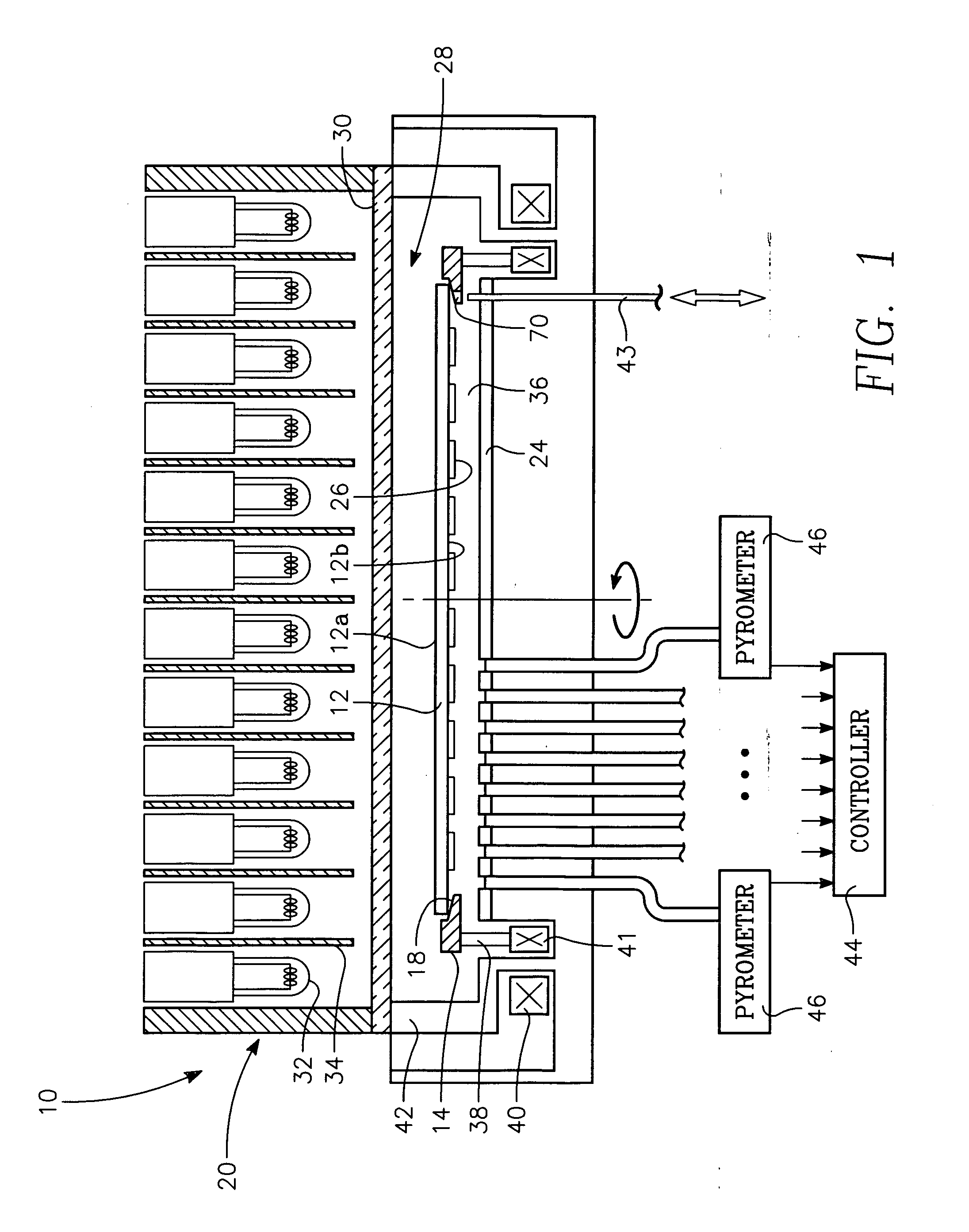Transfer of wafers with edge grip
a technology of transfer and edge grip, which is applied in the direction of transportation and packaging, coating, layered products, etc., can solve the problems of economic disadvantage, expected operation, and difficulty in wafer support and handling
- Summary
- Abstract
- Description
- Claims
- Application Information
AI Technical Summary
Benefits of technology
Problems solved by technology
Method used
Image
Examples
Embodiment Construction
[0035]FIG. 5 shows a plan view of a wafer transfer apparatus 100 incorporating features of the present invention. Although the present invention will be described with reference to the embodiments shown in the drawings, it should be understood that this invention may be embodied in many alternate forms of embodiments. In addition, any suitable size, shape or type of elements or materials could be used. The wafer transfer apparatus 100 is adapted to transport wafers such as semiconductor wafers, such as silicon, gallium arsenide, semiconductor packaging wafers, such as high density interconnects, semiconductor manufacturing process imaging plates, such as masks or reticles, and large area, possibly rectangular, display panels, such as active matrix LCD panel, field emission arrays, plasma displays, other display panels or other applications such as solar cells.
[0036] As shown in FIG. 5, the wafer transfer apparatus 100 includes a wafer blade 102 configured to transfer the wafer 12 i...
PUM
| Property | Measurement | Unit |
|---|---|---|
| temperature | aaaaa | aaaaa |
| temperature | aaaaa | aaaaa |
| diameter | aaaaa | aaaaa |
Abstract
Description
Claims
Application Information
 Login to View More
Login to View More - Generate Ideas
- Intellectual Property
- Life Sciences
- Materials
- Tech Scout
- Unparalleled Data Quality
- Higher Quality Content
- 60% Fewer Hallucinations
Browse by: Latest US Patents, China's latest patents, Technical Efficacy Thesaurus, Application Domain, Technology Topic, Popular Technical Reports.
© 2025 PatSnap. All rights reserved.Legal|Privacy policy|Modern Slavery Act Transparency Statement|Sitemap|About US| Contact US: help@patsnap.com



